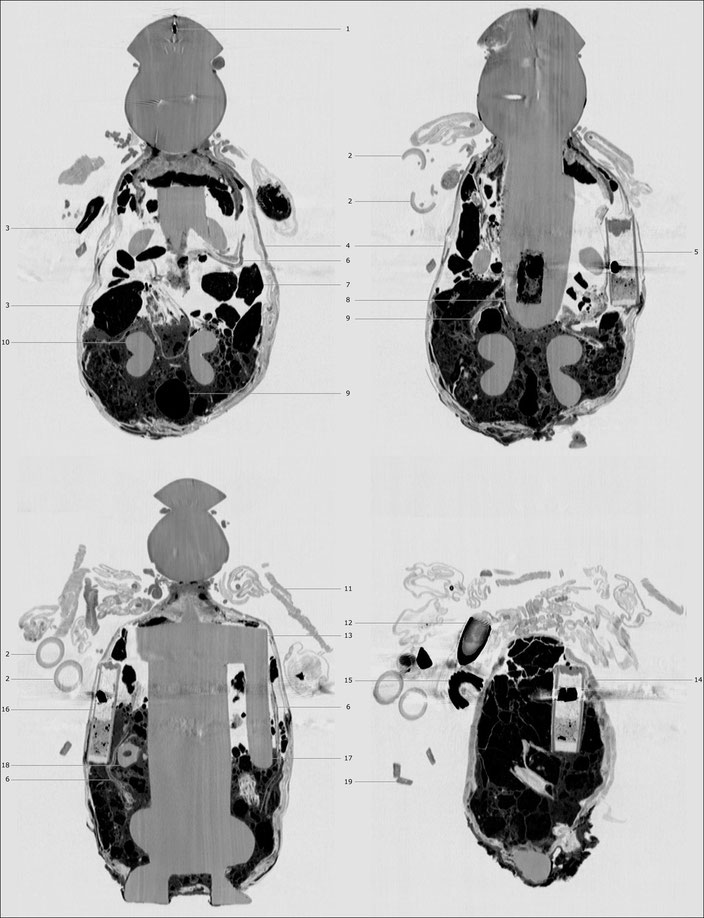Yaka fetish

Video CT scan : 3D translucent VRT view
This Yaka figure looks like a carved head sitting on top of a compact textile ball to which an assortment of small items have been attached: pieces of bamboo, four Möbius strips made of plaited fiber and shells.
Thanks to Dr. Anne-Marie Bouttiaux, chief curator of the Ethnography Division of the Royal Museum for Central Africa in Tervuren, it was CT scanned in 1995.
The operation was not designed to dissipate doubts about its authenticity but to shed light on its very structure and try to pierce the secrets of its inner life when it first came into being.
The idea was to write another page about its ‘social life’, to borrow the now famous title of Arjun Appadurai’s book, in the sense that objects, like people, can have a private and social life.
The CT scan shows that the head poking out of the bundle is in fact the head of a squatting wooden figure carved in the round. Magical substances are tucked away in a cavity in its belly.
There is clear evidence that the object was made in several stages and was perhaps adapted to something other than its original purpose.
Close observation reveals that an inner layer of cloth was wrapped around the statuette, perhaps in an attempt to homogenize the carved surface before adding what was to become the stuffing of its present spherical form.
Soil, lengths of bamboo filled with various powders and blocks of compact substances, particularly fragments of pottery, have been used as stuffing.
The assortment of decorative and ritual items (small clothbags, Möbius strips made of vegetable fiber, bamboo, shells…) attached to the outside of the ball makes the fetish powerful in both appearance and function.
While he was adding the ingredients that would endow it with magical powers, the artist clearly took aesthetic pleasure in harmonizing the whole figure.
Video CT scan : 3D half opaque VRT view
Video CT scan : 3D semi opaque VRT view
Video CT scan : 3D translucent VRT view
Video CT scan : 2D MPR axial slices
To read a full description, please download the PDF of the article published in 2008 by the cultural magazine Arts & Cultures :


